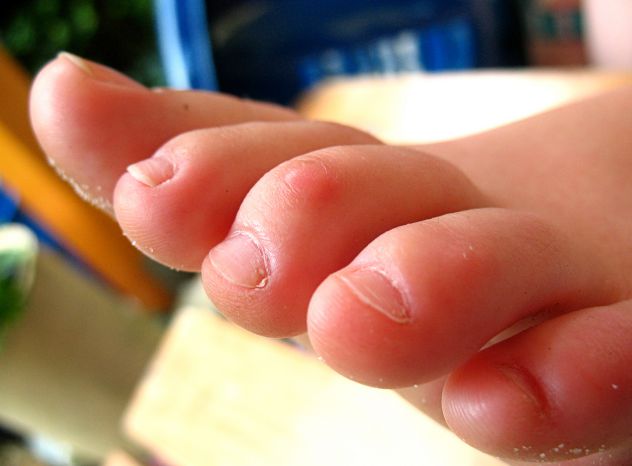COMMON CONDITIONS
Treatment For Hammer Toe | Claw Toe Treatment IN RICHARDSON, DALLAS, GARLAND, WYLIE, MURPHY.
WHAT IS HAMMERTOE?
Hammertoe is a contracture (bending) deformity of one or both joints of the second, third, fourth, or fifth (little) toes. This abnormal bending can put pressure on the toe when wearing shoes, causing problems to develop.
Hammertoes usually start out mild and get worse over time. In the earlier stages, hammertoes are flexible, and the symptoms can often be managed with noninvasive measures. But if left untreated, hammertoes can become more rigid and will not respond to nonsurgical treatment.
HAMMER TOE CAUSES:
Hammer toe happens from muscle imbalance encompassing the middle toe joint. These muscles, ligaments, and tendons work together to bend and straighten the toes.
If one of the muscles get weak, it can’t bend or extend the toe. If the toe remains twisted long enough, the muscles get tight and the toe will not be able to straighten out easily.
These muscle weakness and imbalances are brought about by a variety of factors. Some of the causes for hammer toe are avoidable, it is possible to limit the risk of developing hammer toe.

Causes of hammer toe include the following:
- Certain shoes – Wearing high heels or shoes that are too close through the box can compel toes into a flexed position. At the point when worn consistently, the toes will be unable to straighten out even when you are barefeet.
- Gender – Ladies are bound to develop hammer toe than men.
- Wounds – When a toe is broken, nailed, or stuck, it very well might be bound to develop hammer toe.
- Age – Risk increases with age.
- Toe length – If the second toe is longer than the big toe, hammer toe is bound to happen.
- Certain illnesses – Individuals experiencing conditions like joint pain or diabetes are bound to develop foot issues, including hammer toe.
- Hereditary qualities – Some of the time, hammer toe is inherited and may run in families.
Because of footwear styles, ladies are almost certain than men to create hammer toe. The risk of developing hammer toe additionally increases with age.
SYMPTOMS OF HAMMER TOE:
Common symptoms of hammertoes include:
- Pain or irritation of the affected toe when wearing shoes.
- Corns and calluses (a buildup of skin) on the toe, between two toes, or on the ball of the foot. Corns are caused by constant friction against the shoe. They may be soft or hard, depending on their location.
- Inflammation, redness or a burning sensation
- Contracture of the toe
- In more severe cases of hammertoe, open sores may form
TREATMENT FOR HAMMER TOE:
How to treat hammer toe?
Hammer toe treatment without surgery include the following:
- Padding corns and calluses: Your foot and ankle surgeon can provide or prescribe pads designed to shield corns from irritation. If you want to try over-the-counter pads, avoid the medicated types. Medicated pads are generally not recommended because they may contain a small amount of acid that can be harmful. Consult your surgeon about this option.
- Changes in shoe wear: Avoid shoes with pointed toes, shoes that are too short, or shoes with high heels—conditions that can force your toe against the front of the shoe. Instead, choose comfortable shoes with a deep, roomy toe box and heels no higher than two inches.
- Orthotic devices: A custom orthotic device placed in your shoe may help control the muscle/tendon imbalance. Injection therapy. Corticosteroid injections are sometimes used to ease pain and inflammation caused by hammertoe.
CAN YOU REVERSE A HAMMER TOE?
Hammertoes are progressive and usually can only be managed with splinting. This will not correct the underlying deformity.
SURGICAL HAMMERTOE TREATMENT:
In some cases, usually when the hammertoe has become more rigid and painful or when an open sore has developed, surgery is needed . Often, patients with hammertoe have bunions or other foot deformities corrected at the same time. In selecting the procedure or combination of procedures for your particular case, we will take into consideration the extent of your deformity, the number of toes involved, your age, your activity level and other factors. The length of the recovery period will vary, depending on the procedure or procedures performed.
If you are looking for a good foot and ankle surgeon, Dr. Raymond Delpak has years of experience correcting this issue.
TREATMENT FOR HAMMER TOE | CLAW TOE TREATMENT IN RICHARDSON, DALLAS, GARLAND, WYLIE, MURPHY.
Dr. Raymond Delpak works with patients to determine the best course of action for treating foot and ankle problems. We use the most advanced techniques possible. If you would like to learn more, please visit us TX Foot and Ankle Consultants or schedule an appointment.
SUBSCRIBE TO OUR NEWSLETTER
*for updates on our medical equipment only

